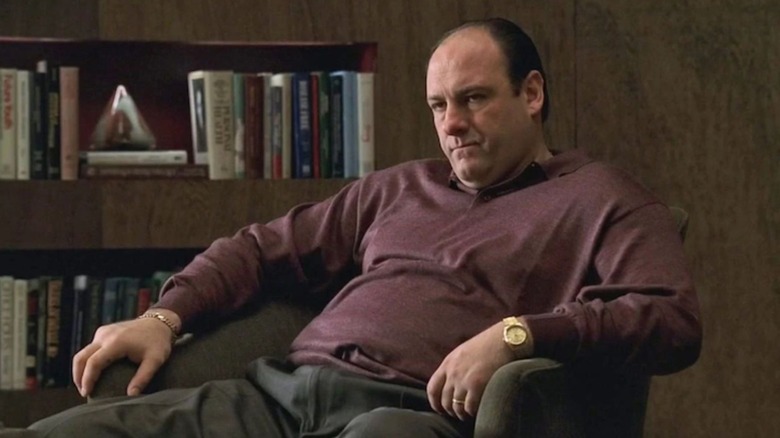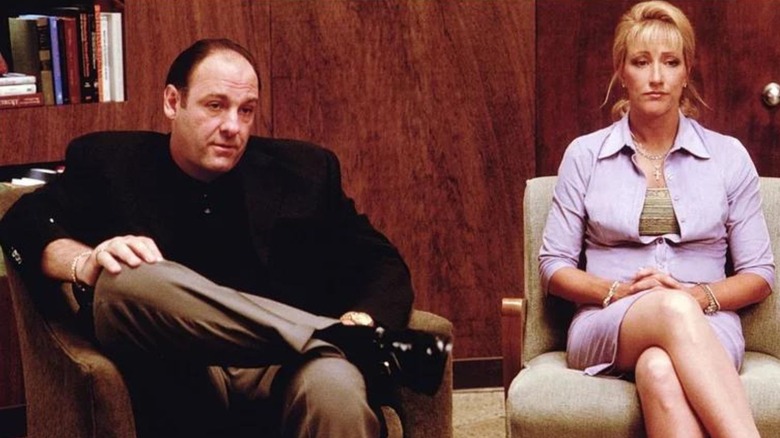The Sopranos Had One Unbreakable Rule For Filming Tony's Therapy Scenes
Hailed as one of the best television shows of all time, "The Sopranos" followed Tony Soprano (James Gandolfini), a ruthless, unapologetic criminal who tortured, murdered, and extorted people for his own thoughtless reasons. He's not the first gangster to have appeared on television, and he was more than that. Tony was an admirer of history, and an antihero, a thief, and a drug dealer. He frequently cheated on his wife, and he committed sin after sin. Still, he genuinely cared for his family. He constantly pretended to be a different person — strong for his family, unfeeling toward his enemies ... and honest with his therapist.
"The Sopranos" illustrated how gangsters need to go to therapy, too. Tony Soprano might ruthlessly execute his victims and then go home as if nothing happened, and yet, somehow, be vulnerable enough to sit down and take professional advice for his mental health. There's no lousy trait he doesn't have — he's oozing toxic masculinity, he is a misogynist, his obsessive infidelity knows no bounds, and he treats women like they're objects. So why did viewers still want to understand where his behavior stemmed from? It's the scenes wherein Tony willingly participated in therapy and spoke with sincerity.
There was only one rule showrunner David Chase asked the crew to follow throughout the filming of "The Sopranos," and no one was allowed to overlook it.
The camera wasn't allowed to move
In an interview with The Hollywood Reporter, David Chase discussed the one unbreakable rule the camera crew followed when filming Tony Soprano's therapy scenes. It was essential for Chase that the sessions reflected authenticity on Tony's part, and to have that kind of absolute consistency about them, the camera remained stagnant. There was no going up front, no close-up stills to claustrophobically capture Tony's emotions, nothing.
Every minute and dialogue was critical, and Chase wanted to ensure that it translated through the camerawork. Viewers wouldn't be assisted by close-up shots that indicated that a specific moment was meaningful — the entire sequence was crucial.
"During the therapy scenes, the camera was not allowed to move. We wouldn't do any dolly push-ins on somebody's face as they're really getting into what they really mean. I said, 'No, that's just not the way therapy is. You're not told when it's getting important. You're flailing your way through it.' And so no dolly-ins. I also had a rule about no overhead shots, but that was a different thing. That was just about money."
"The Sopranos" aired its final episode on June 10, 2007, and the mob-family drama has had a massive impact on television ever since. While the series is teeming with violence and illegal activities, Tony Soprano's therapy sessions gave viewers the opportunity to engage with and see through the many personalities that came together to create television's favorite antihero.

